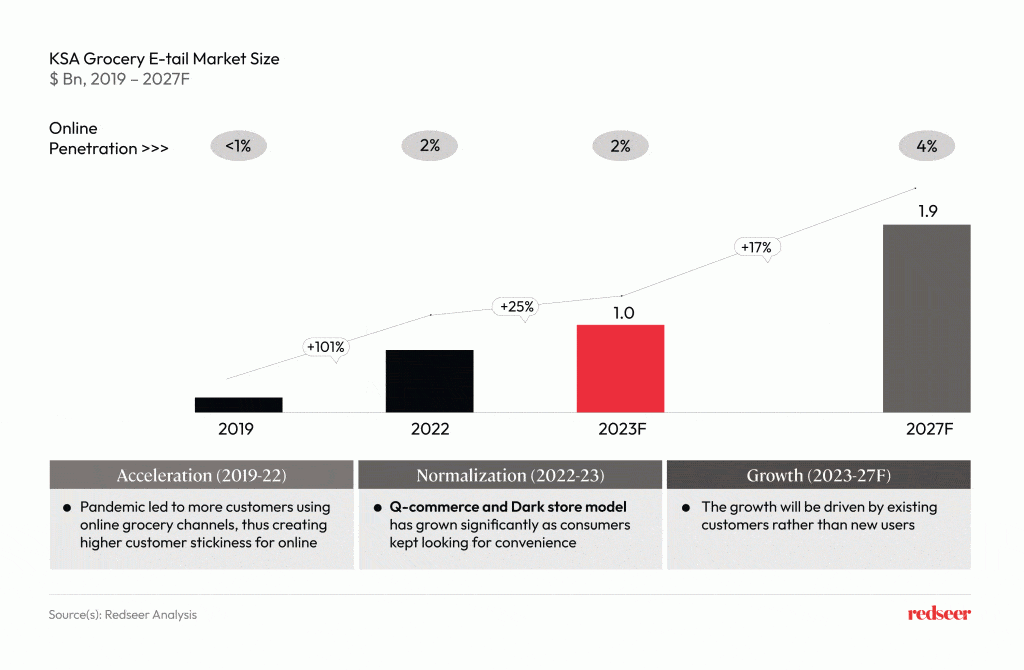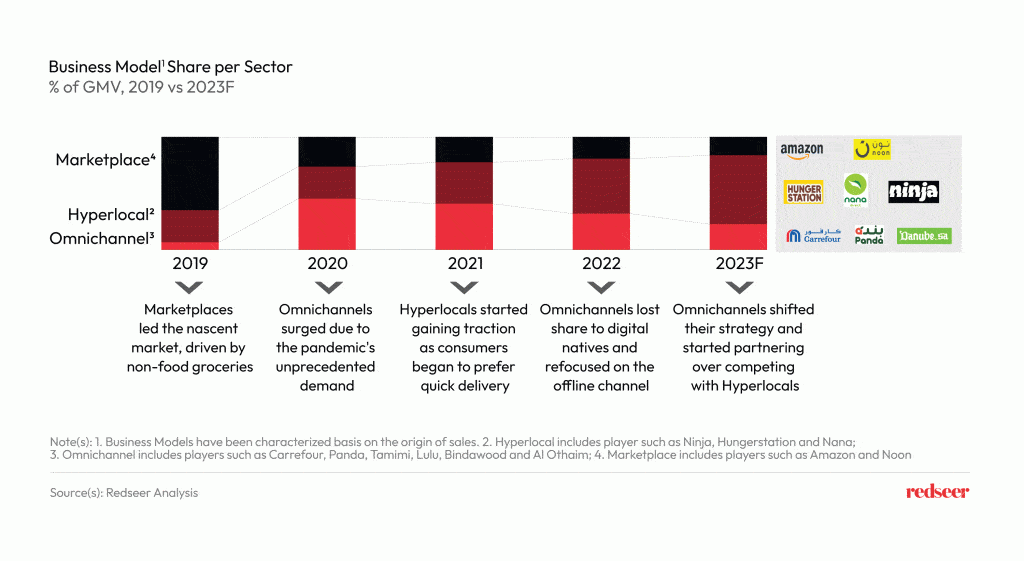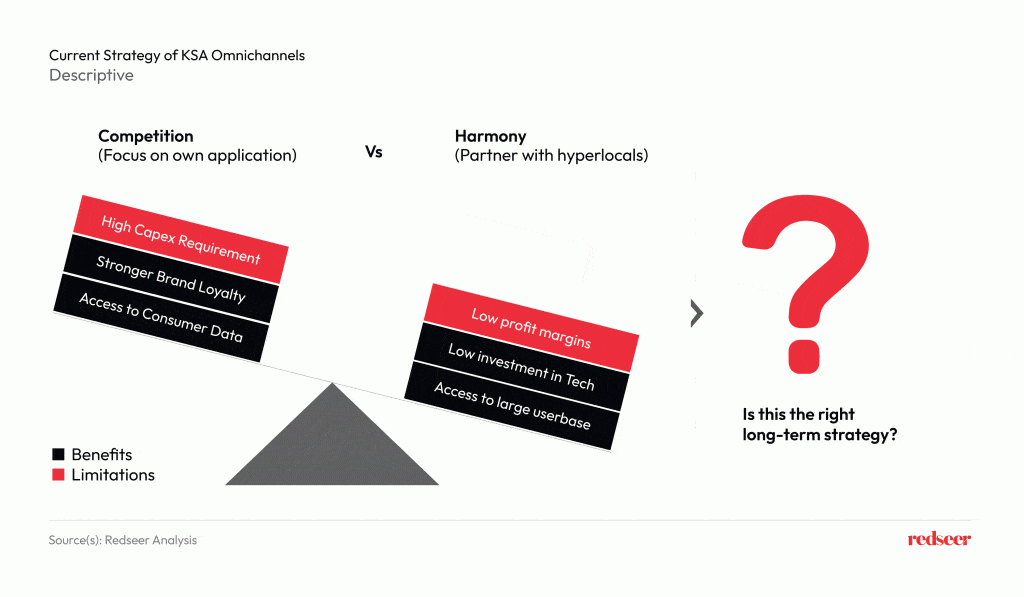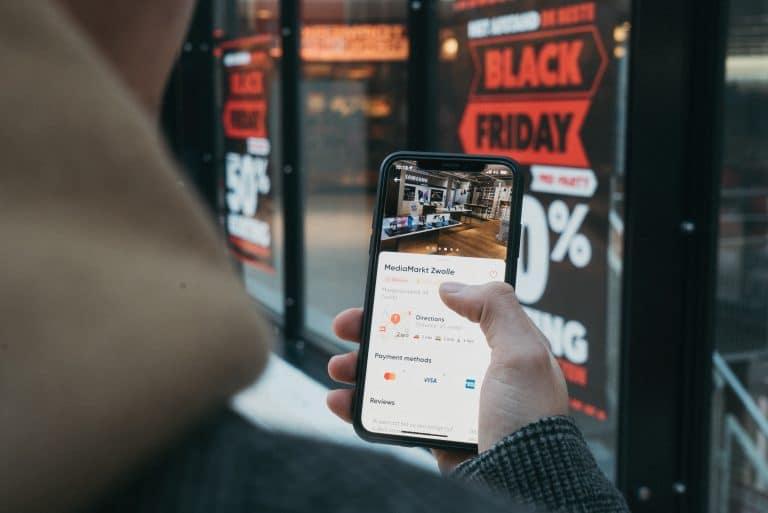eGrocery market in KSA has been undergoing continuous evolution over the past few years. During the pandemic, omnichannels managed to secure a significant market share by leveraging their offline resources. However, in the post-pandemic era, they are struggling to compete with digital natives due to their inferior technology and lack of resources for fast delivery. It would be interesting to know whether omnichannels should aim to compete with or harmonize with hyperlocals.
1. Currently, KSA eGrocery market is nascent, with a penetration rate of 2% and is expected to reach ~$2 Bn by 2027

eGrocery market currently constitutes just $1 billion of the $46 billion total grocery retail market. Factors such as low adoption in non-central regions, among the elderly population and low-income groups, preference for visiting supermarkets, and dissatisfaction with existing eGrocery retailers have discouraged consumers from ordering online. Nevertheless, ongoing investments from the supply side and an increasing preference for convenience are expected to drive market growth, aiming for a 4% penetration rate by 2027.
2. Grocery players are distributed among various business models, with hyperlocals leading the way and expected to grow stronger in coming years

The market has seen transition in the past few years from being marketplace driven to omnichannels and now to hyperlocals. Hyperlocals such as Ninja, Hungerstation and Nana are able to capture significant share of the market owing to quick delivery value proposition and superior tech infra compared to omnichannels
3. Hence, In a nascent market, omnichannels lean towards harmonizing with hyperlocals; But, is this the right long-term strategy?

Omnichannels are increasingly favoring hyperlocal partnerships, viewing the eGrocery market as nascent. Instead of investing heavily in last-mile operations and technology, they opt to collaborate with hyperlocals, leveraging large user base and efficient delivery model for sales. However, in the long term, as the eGrocery market matures, this approach may prove unsustainable. Hyperlocals will consistently prioritize their dark stores, potentially eroding omnichannels’ customer loyalty and hindering their online channel position.







